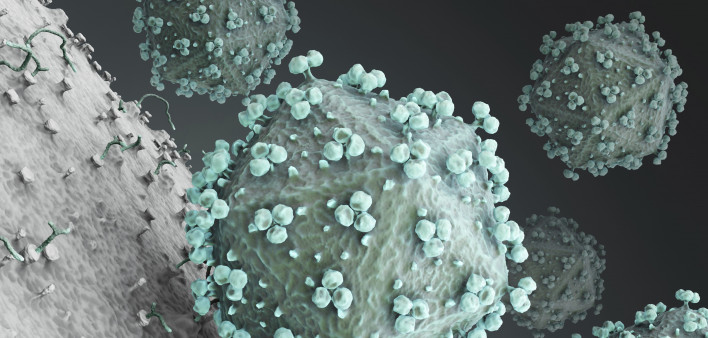People with HIV who naturally control the virus without antiretroviral therapy were twice as likely to develop non-AIDS-defining health problems, especially infections, compared with HIV-negative people, according to study results published in Open Forum Infectious Diseases. This raises questions about whether such individuals should receive treatment.
While most untreated people with HIV have a substantial viral load and a declining CD4 count and eventually experience disease progression, a small proportion—estimated to be less than 1%—are able to maintain a very low viral load without antiretrovirals. Nonetheless, untreated HIV may result in persistent immune activation and inflammation that can lead to a wide variety of health problems.
Carmelite Manto, of Université Paris Saclay, and colleagues compared outcomes among 227 spontaneous HIV controllers and 328 people on antiretroviral therapy from two French cohorts. People in the first group had been HIV positive for at least five years, had never taken antiretrovirals and had at least five consecutive viral load measurements below 400. Those in the latter group started antiretroviral therapy within one month after an acute or primary HIV diagnosis, achieved an undetectable viral load within 12 months and maintained viral suppression for at least five years.
In the controller group, about half had been diagnosed in 2000 or earlier. The median age was 45 years, 57% were women, 59% were white and 38% were Black. Nearly half (46%) also tested positive for hepatitis B virus (HBV), and 6% tested positive for hepatitis C virus (HCV). In the other group, half were diagnosed during 2008 to 2013. The median age was 42, most (86%) were men, more than 90% were white and only 7% were Black; 22% and 3%, respectively, tested positive for HBV and HCV. CD4 and CD8 T-cell counts were high (above 700) and similar in both groups; 17% and 14%, respectively, had CD4 counts below 500. During follow-up, 11% of the HIV controllers experienced one or more viral blips (isolated increases) compared with just 2% in the treated group.
The researchers looked at health events not included in the definition of AIDS, such as non-AIDS infections, cancers, bone problems and heart, liver, lung and psychiatric conditions.
During follow-up, 68 people in the HIV controller group and 62 people on antiretroviral treatment experienced non-AIDS-defining events. Overall incidence rates were 7.8 and 5.2 events per 100 person-months, respectively. Rates of cardiovascular, pulmonary, liver and psychiatric events and non-AIDS malignancies were similar in both groups. Infections were the most common non-AIDS conditions in both groups, but these occurred twice as often among HIV controllers (4.1 versus 1.9 per 100 person-months). These included bronchial, ear/nose/throat, gastrointestinal and urinary tract infections, none of which were severe or required hospitalization.
After adjusting for other factors, including demographics and immunological characteristics, the only other factor associated with non-AIDS-defining events in both groups was older age. Hepatitis B or C coinfection had no apparent effect.
“[HIV controllers] experienced two times more non-AIDS-defining events than virologically suppressed patients on antiretroviral therapy, mainly non-AIDS-related benign infections,” the study authors concluded. “Older age was associated with non-AIDS-defining event occurrence, independent of immune or virologic parameters.”
In previous studies, the researchers found that some HIV controllers had detectable immune activation and inflammatory biomarkers, though those who maintained viral control through the observation period had very low levels of inflammation. In this study, they could not test the role of immune activation because only a subset of participants had available data.
These results, they suggested, “do not argue in favor of expanding the antiretroviral therapy indication for [HIV controllers] but rather a case-by-case approach considering clinical outcomes such as non-AIDS-defining events besides immune activation.”
Click here for more news about HIV treatment.







Comments
Comments